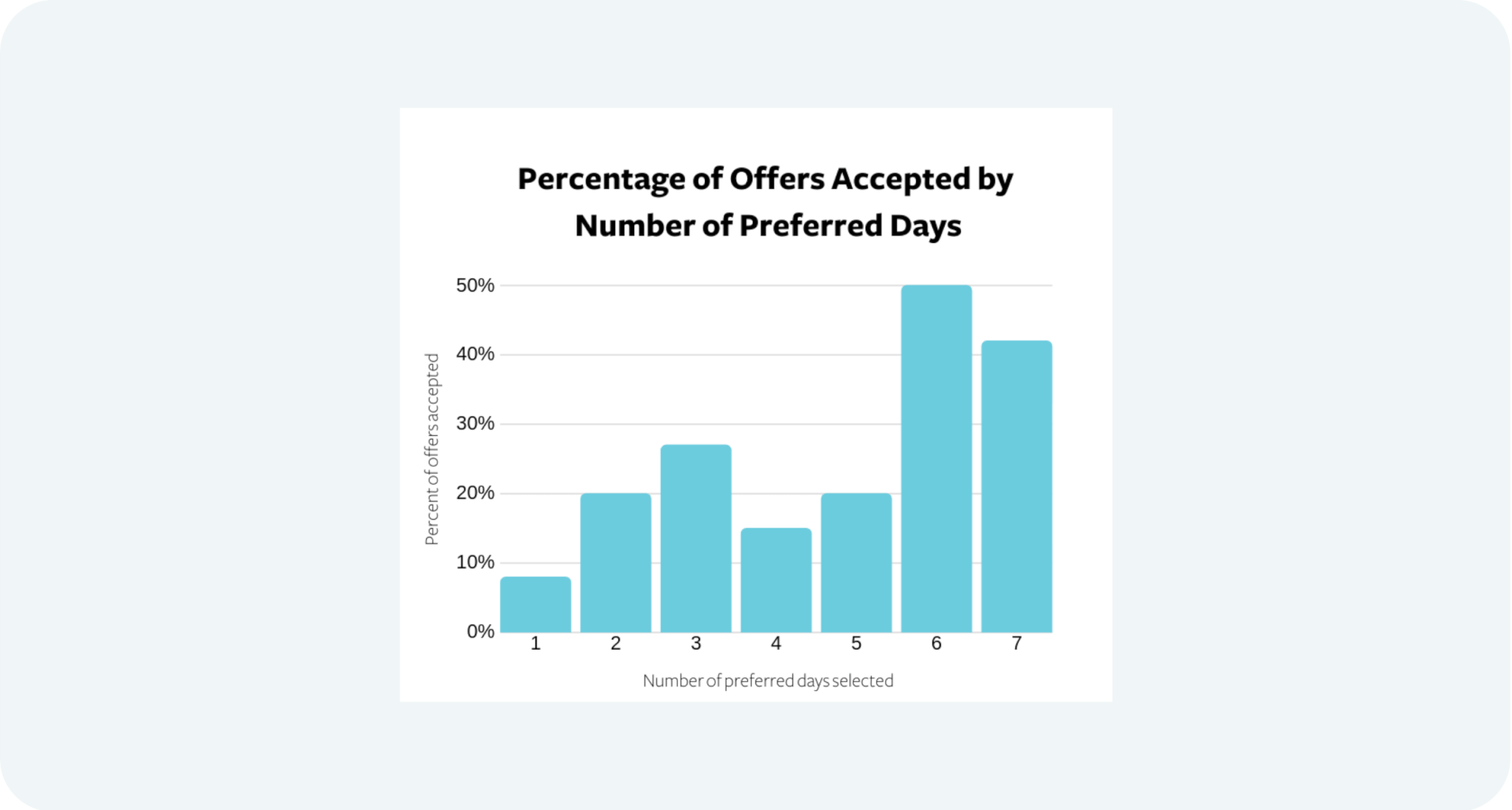In this 3-part series, we’re sharing the top best practices for managing your waitlist and filling appointment cancellations.
In part one, we shared two best practices to help fill appointment cancellations. Then, in part two, we looked at whether text messaging or phone calls, specifically, performed better for appointment confirmation and response rate, based on age. In this post, we’re sharing how two more important factors, day and time, affect patients’ acceptance rate of appointment offers.

Healthcare professionals, we want to hear from you. If you work in healthcare, click this link, take our 10-minute survey, and get entered in our giveaway for a $100 Visa gift card.
Our product offers granular control of when appointment offers can go out during the day. This ensures that patients aren’t messaged at inconvenient times, even if the appointment is cancelled at an odd time. To save our customers time and make managing their waitlist as easy as possible, our waitlist processing and detection is automated. If an appointment is cancelled at 1 AM, we will detect and start processing the waitlist immediately, unless you have chosen to have no outgoing messages during that time.
For example, you may choose to not have any outgoing messages between 9 PM – 9 AM. If so, and a patient cancels an appointment at 10 PM, they will not receive a message with options to reschedule their cancelled appointment until after 9 AM the next morning.
This raises the question–when is the best time of day to send out new appointment offers?
Because the entire process is automated, an offer goes out as soon as we’ve detected a new cancellation. However, there are specific times during the day when patients are more responsive and you have a higher likelihood of appointment confirmations.

We’ve found that the highest percentage of appointment offer acceptances occurs during normal business hours (8 AM – 4 PM). The percentage of accepted offers falls off slightly just outside of normal business operating hours. This also makes sense in regards to appointment reminders. Many traditional appointment reminder services send reminders later in the evening. However, based on our data, that is not the best time of day for patient engagement.
Our product offers granular control of when appointment offers can go out during the day. This ensures that patients aren’t messaged at inconvenient times, even if the appointment is cancelled at an odd time.
Now that you know the best times to contact patients, let’s take a look at whether or not setting day of the week preferences affects the chances of a patient accepting an appointment offer.
Our waitlist product allows patients to specify preferred days of the week, so that they only hear about appointments that fit their availability. This means that patients with more strict preferences and fewer preferred days will receive fewer offers.

When we looked at all patients currently waiting on waitlists, and looked back at all patients who’ve accepted an offer over the past few months, we found that patients with fewer preferred days had a much lower percentage of finding an appointment. This certainly isn’t eye-opening, but it does emphasize the need to encourage patients to not narrow their options too much. Their chance of finding an appointment increases exponentially when they have more open options. Keep this in mind when communicating with patients. Explaining this to them may help encourage some to change their mind – helping you fill more open appointment slots and better manage your waitlist.
Looking for more best practices for managing your waitlist? Check out part one and part two.
Our products are fine-tuned to make managing your waitlist easier and more productive. So, if you’re ready to save time and fill appointments faster, contact us today to find out how we can help!
Tashfeen Ekram, MD, is a radiologist, self-taught coder, healthcare innovator and Co-Founder of Luma Health. Contact him on Twitter at @tashfeenekramMD.








